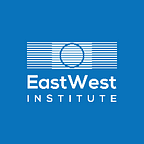The Integration Dilemma in the EU’s Eastern Partnership Region
In Europe, there is a clear understanding that unresolved ethnic and geopolitical conflicts are threats to regional stability. Stabilization of the European Eastern neighborhood has been a security imperative for the European Union (EU) for some time. A principal goal of the 2016’s EU Global Strategy and the revised European Neighborhood Policy is to invest in the resilience of Eastern Partnership (EaP) countries — Armenia, Azerbaijan, Belarus, Georgina, Moldova and Ukraine.
The EU’s primary objective in the EaP is to fund the development of democratic institutions, good governance and economic development. However, there exists a dilemma within the region when it comes to its economic integration with the EU, resulting in new divisions and dissent amongst states.
All EaP countries would like to take advantage of closer economic links with both the EU and Russia via the Eurasian Economic Union (EAEU). Politically and economically, the integration dilemma between the EU common market and the EAEU remains deeply divisive — the EU is the largest economic block in the world, while Russia’s regional focus appeals to some EaP nations.
According to IMF data, in 2016, the average income per capita in the region was 3,378 USD per year, which is only eight percent of the EU’s average per capita income. Moldova is the poorest country in the region with only 1,871 USD per capita, in 2016. When considering a weak regional recovery following the global economic crisis — which saw an average economic contraction of negative six percent in 2009 (with the exception of Azerbaijan) — hopes of catching up with the rest of Europe are fading.
In the current environment, Russia remains a significant player, exerting influence using economic, energy and political leverage. Understandably, the combination of internal vulnerabilities and external pressures creates a very challenging situation, where instability and lack of economic security support a cycle of weak governance, high levels of corruption, poverty and inequality, and weak economic development.
Competing Orbits
The difference in allegiances of the EaP nations is increasingly apparent. Georgia, Moldova and Ukraine are signatories to the Deep and Comprehensive Free Trade Agreement (DCFTA), bringing relations between these countries and the EU to new economic levels. Meanwhile, Armenia and Belarus have opted to join the Eurasian Economic Union (EAEU) in partnership with Russia, Kazakhstan and Kyrgyzstan (Azerbaijan remains neutral).
Countries are free to choose the trade agreement that best serve their trade and economic interests. In the case of the EaP region, it is important to look at the essential differences between the EU and the EAEU, their purpose, complexity and attractiveness.
